- Home
- Richard Dawkins
The Extended Phenotype Page 2
The Extended Phenotype Read online
Page 2
Lorenz’s (1937) discovery that a behaviour pattern can be treated like an anatomical organ was not a discovery in the ordinary sense. No experimental results were adduced in its support. It was simply a new way of seeing facts that were already commonplace, yet it dominates modern ethology (Tinbergen 1963), and it seems to us today so obvious that it is hard to understand that it ever needed ‘discovering’. Similarly, D’Arcy Thompson’s (1917) celebrated chapter ‘On the theory of transformations …’ is widely regarded as a work of importance although it does not advance or test a hypothesis. In a sense it is obviously necessarily true that any animal form can be turned into a related form by a mathematical transformation, although it is not obvious that the transformation will be a simple one. In actually doing it for a number of specific examples, D’Arcy Thompson invited a ‘so what?’ reaction from anyone fastidious enough to insist that science proceeds only by the falsifying of specific hypotheses. If we read D’Arcy Thompson’s chapter and then ask ourselves what we now know that we did not know before, the answer may well be not much. But our imagination is fired. We go back and look at animals in a new way; and we think about theoretical problems, in this case those of embryology and phylogeny and their interrelations, in a new way. I am, of course, not so presumptuous as to compare the present modest work with the masterpiece of a great biologist. I use the example simply to demonstrate that it is possible for a theoretical book to be worth reading even if it does not advance testable hypotheses but seeks, instead, to change the way we see.
Another great biologist once recommended that to understand the actual we must contemplate the possible: ‘No practical biologist interested in sexual reproduction would be led to work out the detailed consequences experienced by organisms having three or more sexes; yet what else should he do if he wishes to understand why the sexes are, in fact, always two?’ (Fisher 1930a, p. ix). Williams (1975), Maynard Smith (1978a) and others have taught us that one of the commonest, most universal features of life on Earth, sexuality itself, should not be accepted without question. Indeed, its existence turns out to be positively surprising when set against the imagined possibility of asexual reproduction. To imagine asexual reproduction as a hypothetical possibility is not difficult, since we know it is a reality in some animals and plants. But are there other cases where our imagination receives no such prompting? Are there important facts about life that we hardly notice simply because we lack the imagination to visualise alternatives which, like Fisher’s three sexes, might have existed in some possible world? I shall try to show that the answer is yes.
Playing with an imaginary world, in order to increase our understanding of the actual world, is the technique of ‘thought experiment’. It is much used by philosophers. For instance in a collection of essays on The Philosophy of Mind (ed. Glover 1976), various authors imagine surgical operations in which one person’s brain is transplanted into another person’s body, and they use the thought experiment to clarify the meaning of ‘personal identity’. At times philosophers’ thought experiments are purely imaginary and wildly improbable, but this doesn’t matter given the purpose for which they are made. At other times they are informed, to a greater or lesser extent, by facts from the real world, for instance the facts of split-brain experiments.
Consider another thought experiment, this time from evolutionary biology. When I was an undergraduate obliged to write speculative essays on ‘the origin of the Chordates’ and other topics of remote phylogeny, one of my tutors rightly tried to shake my faith in the value of such speculations by suggesting that anything could, in principle, evolve into anything else. Even insects could evolve into mammals, if only the right sequence of selection pressures were provided in the right order. At the time, as most zoologists would, I dismissed the idea as obvious nonsense, and I still, of course, don’t believe that the right sequence of selection pressures ever would be provided. Nor did my tutor. But as far as the principle is concerned, a simple thought experiment shows it to be nearly incontrovertible. We need only prove that there exists a continuous series of small steps leading from an insect, say a stag beetle, to a mammal, say a stag. By this I mean that, starting with the beetle, we could lay out a sequence of hypothetical animals, each one as similar to the previous member of the series as a pair of brothers might be, and the sequence would culminate in a red deer stag.
The proof is easy, provided only that we accept, as everyone does, that beetle and deer have a common ancestor, however far back. Even if there is no other sequence of steps from beetle to deer, we know that at least one sequence must be obtained by simply tracing the beetle’s ancestors back to the common ancestor, then working forwards down the other line to the deer.
We have proved that there exists a trajectory of stepwise change connecting beetle to deer and, by implication, a similar trajectory from any modern animal to any other modern animal. In principle, therefore, we may presume that a series of selection pressures could be artificially contrived to propel a lineage along one of these trajectories. It was a quick thought experiment along these lines that enabled me to say, when discussing D’Arcy Thompson’s transformations, that ‘In a sense it is obviously necessarily true that any animal form can be turned into a related form by a mathematical transformation, although it is not obvious that the transformation will be a simple one.’ In this book I shall make frequent use of the thought-experiment technique. I warn the reader of this in advance, since scientists are sometimes annoyed by the lack of realism in such forms of reasoning. Thought experiments are not supposed to be realistic. They are supposed to clarify our thinking about reality.
One feature of life in this world which, like sex, we have taken for granted and maybe should not, is that living matter comes in discrete packages called organisms. In particular, biologists interested in functional explanation usually assume that the appropriate unit for discussion is the individual organism. To us, ‘conflict’ usually means conflict between organisms, each one striving to maximize its own individual ‘fitness’. We recognize smaller units such as cells and genes, and larger units such as populations, societies and ecosystems, but there is no doubt that the individual body, as a discrete unit of action, exerts a powerful hold over the minds of zoologists, especially those interested in the adaptive significance of animal behaviour. One of my aims in this book is to break that hold. I want to switch emphasis from the individual body as focal unit of functional discussion. At the very least I want to make us aware of how much we take for granted when we look at life as a collection of discrete individual organisms.
The thesis that I shall support is this. It is legitimate to speak of adaptations as being ‘for the benefit of’ something, but that something is best not seen as the individual organism. It is a smaller unit which I call the active, germ-line replicator. The most important kind of replicator is the ‘gene’ or small genetic fragment. Replicators are not, of course, selected directly, but by proxy; they are judged by their phenotypic effects. Although for some purposes it is convenient to think of these phenotypic effects as being packaged together in discrete ‘vehicles’ such as individual organisms, this is not fundamentally necessary. Rather, the replicator should be thought of as having extended phenotypic effects, consisting of all its effects on the world at large, not just its effects on the individual body in which it happens to be sitting.
To return to the analogy of the Necker Cube, the mental flip that I want to encourage can be characterized as follows. We look at life and begin by seeing a collection of interacting individual organisms. We know that they contain smaller units, and we know that they are, in turn, parts of larger composite units, but we fix our gaze on the whole organisms. Then suddenly the image flips. The individual bodies are still there; they have not moved, but they seem to have gone transparent. We see through them to the replicating fragments of DNA within, and we see the wider world as an arena in which these genetic fragments play out their tournaments of manipulative skill. Genes manipulate
the world and shape it to assist their replication. It happens that they have ‘chosen’ to do so largely by moulding matter into large multicellular chunks which we call organisms, but this might not have been so. Fundamentally, what is going on is that replicating molecules ensure their survival by means of phenotypic effects on the world. It is only incidentally true that those phenotypic effects happen to be packaged up into units called individual organisms.
We do not at present appreciate the organism for the remarkable phenomenon it is. We are accustomed to asking, of any widespread biological phenomenon, ‘What is its survival value?’ But we do not say, ‘What is the survival value of packaging life up into discrete units called organisms?’ We accept it as a given feature of the way life is. As I have already noted, the organism becomes the automatic subject of our questions about the survival value of other things: ‘In what way does this behaviour pattern benefit the individual doing it? In what way does this morphological structure benefit the individual it is attached to?’
It has become a kind of ‘central theorem’ (Barash 1977) of modern ethology that organisms are expected to behave in such a way as to benefit their own inclusive fitness (Hamilton 1964a,b), rather than to benefit anyone, or anything, else. We do not ask in what way the behaviour of the left hind leg benefits the left hind leg. Nor, nowadays, do most of us ask how the behaviour of a group of organisms, or the structure of an ecosystem, benefits that group or ecosystem. We treat groups and ecosystems as collections of warring, or uneasily cohabiting, organisms; and we treat legs, kidneys, and cells as cooperating components of a single organism. I am not necessarily objecting to this focus of attention on individual organisms, merely calling attention to it as something that we take for granted. Perhaps we should stop taking it for granted and start wondering about the individual organism, as something that needs explaining in its own right, just as we found sexual reproduction to be something that needs explaining in its own right.
At this point an accident of the history of biology necessitates a tiresome digression. The prevailing orthodoxy of my previous paragraph, the central dogma of individual organisms working to maximize their own reproductive success, the paradigm of ‘the selfish organism’, was Darwin’s paradigm, and it is dominant today. One might imagine, therefore, that it had had a good run for its money and should, by now, be ripe for revolution, or at least constitute a solid-enough bastion to withstand iconoclastic pinpricks such as any that this book might deliver. Unfortunately, and this is the historical accident I mentioned, although it is true that there has seldom been any temptation to treat units smaller than the organism as agents working for their own benefit, the same has not always been true of larger units. The intervening years since Darwin have seen an astonishing retreat from his individual-centred stand, a lapse into sloppily unconscious group-selectionism, ably documented by Williams (1966), Ghiselin (1974a) and others. As Hamilton (1975a) put it, ‘… almost the whole field of biology stampeded in the direction where Darwin had gone circumspectly or not at all’. It is only in recent years, roughly coinciding with the belated rise to fashion of Hamilton’s own ideas (Dawkins 1979b), that the stampede has been halted and turned. We painfully struggled back, harassed by sniping from a Jesuitically sophisticated and dedicated neo-group-selectionist rearguard, until we finally regained Darwin’s ground, the position that I am characterizing by the label ‘the selfish organism’, the position which, in its modern form, is dominated by the concept of inclusive fitness. Yet it is this hard-won fastness that I may seem to be abandoning here, abandoning almost before it is properly secured; and for what? For a flickering Necker Cube, a metaphysical chimera called the extended phenotype?
No, to renounce those gains is far from my intention. The paradigm of the selfish organism is vastly preferable to what Hamilton (1977) has called ‘the old, departing paradigm of adaptation for the benefit of the species’. ‘Extended phenotype’ is misunderstood if it is taken to have any connection with adaptation at the level of the group. The selfish organism, and the selfish gene with its extended phenotype, are two views of the same Necker Cube. The reader will not experience the conceptual flip-over that I seek to assist unless he begins by looking at the right cube. This book is addressed to those that already accept the currently fashionable selfish-organism view of life, rather than any form of ‘group benefit’ view.
I am not saying that the selfish organism view is necessarily wrong, but my argument, in its strong form, is that it is looking at the matter the wrong way up. I once overheard an eminent Cambridge ethologist say to an eminent Austrian ethologist (they were arguing about behaviour development): ‘You know, we really agree. It is just that you say it wrong.’ Gentle ‘individual selectionist’, we really do almost agree, at least in comparison to the group selectionists. It is just that you see it wrong!
Bonner (1958), discussing single-celled organisms, said ‘… what special use to these organisms are nuclear genes? How did they arise by selection?’ This is a good example of the kind of imaginative, radical question that I think we ought to ask about life. But if the thesis of this book is accepted, the particular question should be turned upside down. Instead of asking of what use nuclear genes are to organisms, we should ask why genes chose to group themselves together in nuclei, and in organisms. In the opening lines of the same work, Bonner says: ‘I do not propose to say anything new or original in these lectures. But I am a great believer in saying familiar, well-known things backwards and inside out, hoping that from some new vantage point the old facts will take on a deeper significance. It is like holding an abstract painting upside down; I do not say that the meaning of the picture will suddenly be clear, but some of the structure of the composition that was hidden may show itself’ (p. 1). I came across this after writing my own Necker Cube passage, and was delighted to find the same views expressed by so respected an author.
The trouble with my Necker Cubes, and with Bonner’s abstract painting, is that, as analogies, they may be too timid and unambitious. The analogy of the Necker Cube expresses my minimum hope for this book. I am pretty confident that to look at life in terms of genetic replicators preserving themselves by means of their extended phenotypes is at least as satisfactory as to look at it in terms of selfish organisms maximizing their inclusive fitness. In many cases the two ways of looking at life will, indeed, be equivalent. As I shall show, ‘inclusive fitness’ was defined in such a way as to tend to make ‘the individual maximizes its inclusive fitness’ equivalent to ‘the genetic replicators maximize their survival’. At least, therefore, the biologist should try both ways of thinking, and choose the one he or she prefers. But I said this was a minimum hope. I shall discuss phenomena, ‘meiotic drive’ for instance, whose explanation is lucidly written on the second face of the cube, but which make no sense at all if we keep our mental gaze firmly fixed on the other face, that of the selfish organism. Moving from my minimum hope to my wildest daydream, it is that whole areas of biology, the study of animal communication, animal artefacts, parasitism and symbiosis, community ecology, indeed all interactions between and within organisms, will eventually be illuminated in new ways by the doctrine of the extended phenotype. As is the way with advocates, I shall try to make the strongest case I can, and this means the case for the wilder hopes rather than the more cautious minimum expectations.
If these grandiose hopes are eventually realized, perhaps a less modest analogy than the Necker Cube will be pardoned. Colin Turnbull (1961) took a pygmy friend, Kenge, out of the forest for the first time in his life, and they climbed a mountain together and looked out over the plains. Kenge saw some buffalo ‘grazing lazily several miles away, far down below. He turned to me and said. “What insects are those?” … At first I hardly understood, then I realized that in the forest vision is so limited that there is no great need to make an automatic allowance for distance when judging size. Out here in the plains, Kenge was looking for the first time over apparently unending miles of unfamili
ar grasslands, with not a tree worth the name to give him any basis for comparison … When I told Kenge that the insects were buffalo, he roared with laughter and told me not to tell such stupid lies …’ (pp. 227–228).
This book as a whole, then, is a work of advocacy, but it is a poor advocate that leaps precipitately to his conclusion when the jury are sceptical. The second face of my Necker Cube is unlikely to click into clear focus until near the end of the book. Earlier chapters prepare the ground, attempt to forestall certain risks of misunderstanding, dissect the first face of the Necker Cube in various ways, point up reasons why the paradigm of the selfish individual, if not actually incorrect, can lead to difficulties.
Parts of some early chapters are frankly retrospective and even defensive. Reaction to a previous work (Dawkins 1976a) suggests that this book is likely to raise needless fears that it promulgates two unpopular ‘-isms’—‘genetic determinism’ and ‘adaptationism’. I myself admit to being irritated by a book that provokes me into muttering ‘Yes but …’ on every page, when the author could easily have forestalled my worry by a little considerate explanation early on. Chapters 2 and 3 try to remove at least two major sources of ‘yes-buttery’ at the outset.

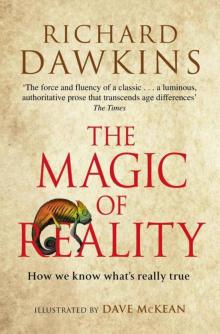 The Magic of Reality
The Magic of Reality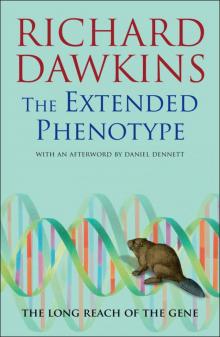 The Extended Phenotype
The Extended Phenotype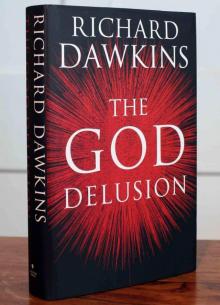 The God Delusion
The God Delusion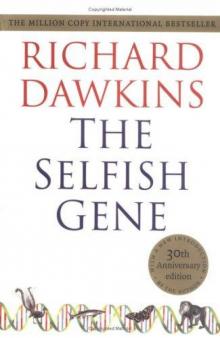 The Selfish Gene
The Selfish Gene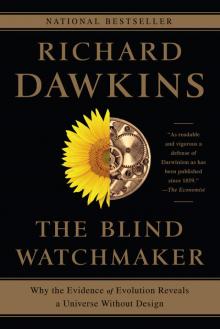 The Blind Watchmaker
The Blind Watchmaker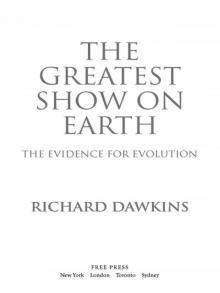 The Greatest Show on Earth
The Greatest Show on Earth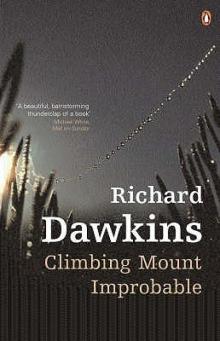 Climbing Mount Improbable
Climbing Mount Improbable Outgrowing God
Outgrowing God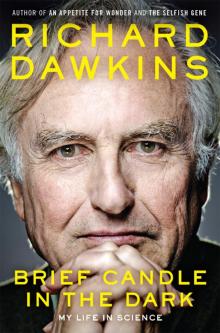 Brief Candle in the Dark
Brief Candle in the Dark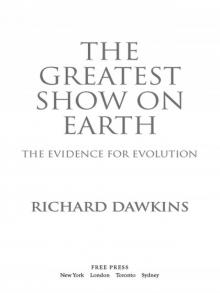 The Greatest Show on Earth: The Evidence for Evolution
The Greatest Show on Earth: The Evidence for Evolution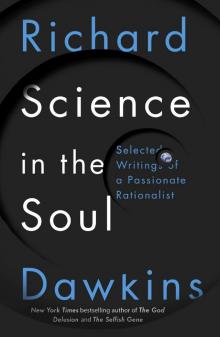 Science in the Soul
Science in the Soul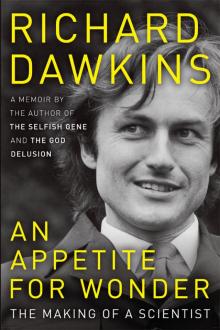 An Appetite for Wonder
An Appetite for Wonder